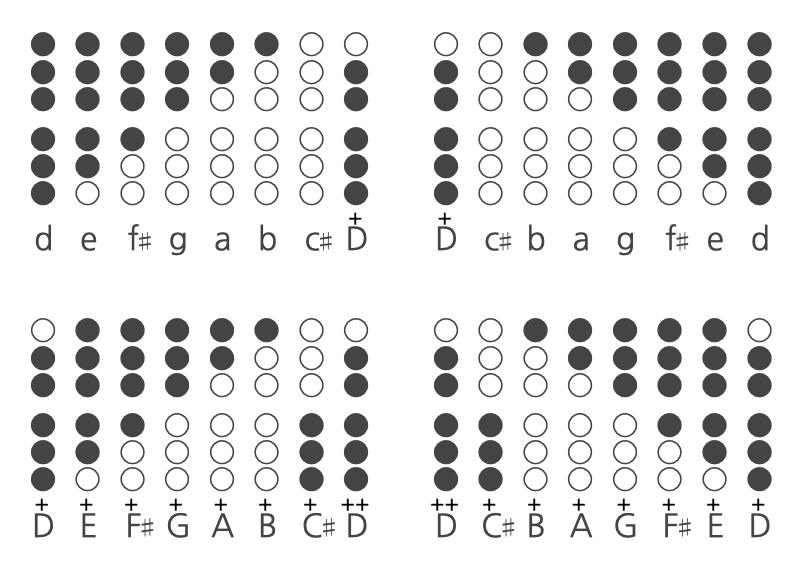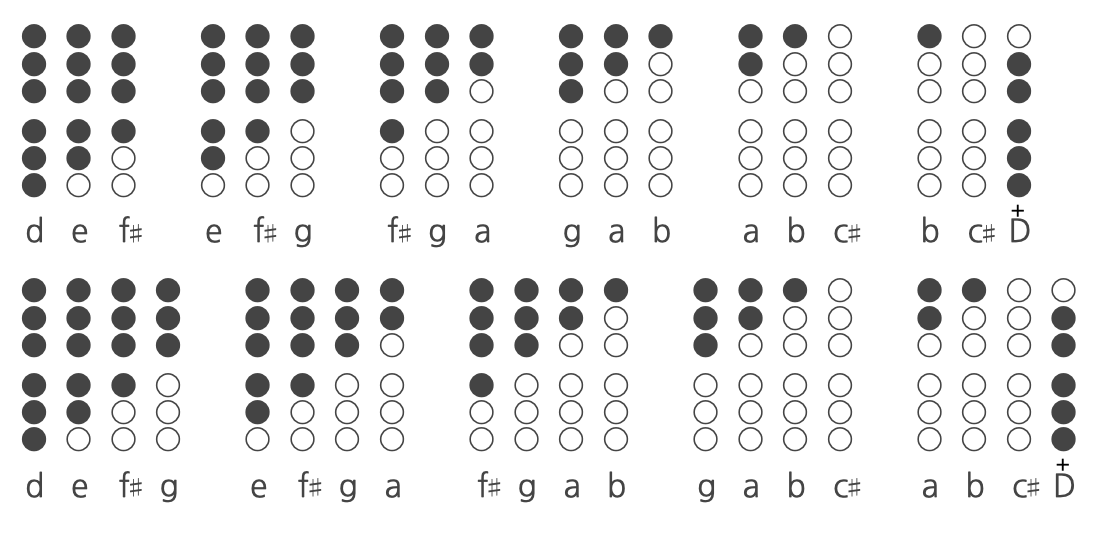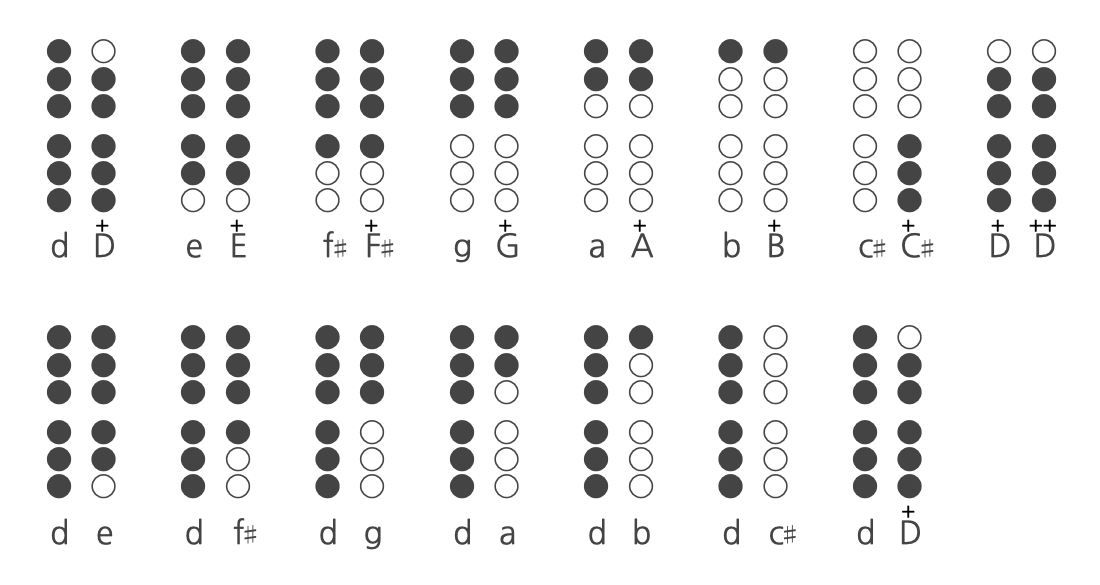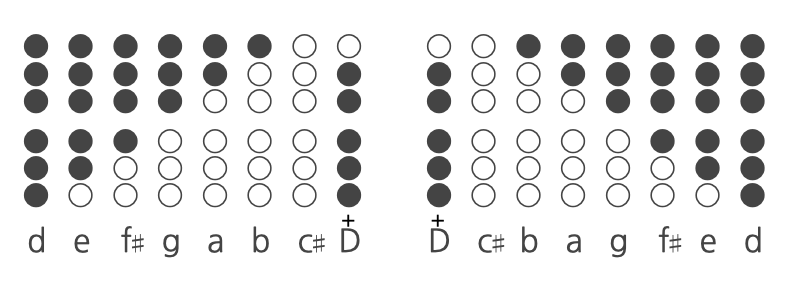 Hello my friends, I am glad that you have decided to put more effort into your learning journey on the tin whistle.
Hello my friends, I am glad that you have decided to put more effort into your learning journey on the tin whistle.
I will now share 5 great exercises for improving your tin whistle skills. Here we go!
1 – Scale Walks
Playing scales may be boring, but it is one of the best ways to develop muscle memory for playing your tin whistle. Start by mastering the first octave scale, and then continue with the 2nd octave when you feel ready for it.

2 – Scale Turns
Going in only one direction is one thing. But playing scales while switching direction up/down every now and then, will improve your finger dexterity and muscle memory even more.

3 – Interval Jumps
When you only go up or down one note at a time, the change in breath pressure will be minimal. So you need to practice bigger intervals in order to develop an instinct for how much air pressure every note needs.

4 – Tonguing Variations
One of the main ways to add variation and expression into your tin whistle performances is to shape the start of every note. Practicing different tonguing variations, from no accent to hard accent, is a great way to do this. Play the 1st octave scale up and down first with legato (no tonguing), then soft accent (hu), then medium accent (ku) and finally hard accent (tu).

5 – Rhythm Exercises
You also need to learn how to play rhythms, and to keep the time and groove of any tune you play. I recommend practicing standard note lengths first, then do random rhythmic phrases. Mainly on 1 single note, to make sure you are focusing 100% on the rhythmic side. Then you can move on to playing rhythmic phrases using different notes.

